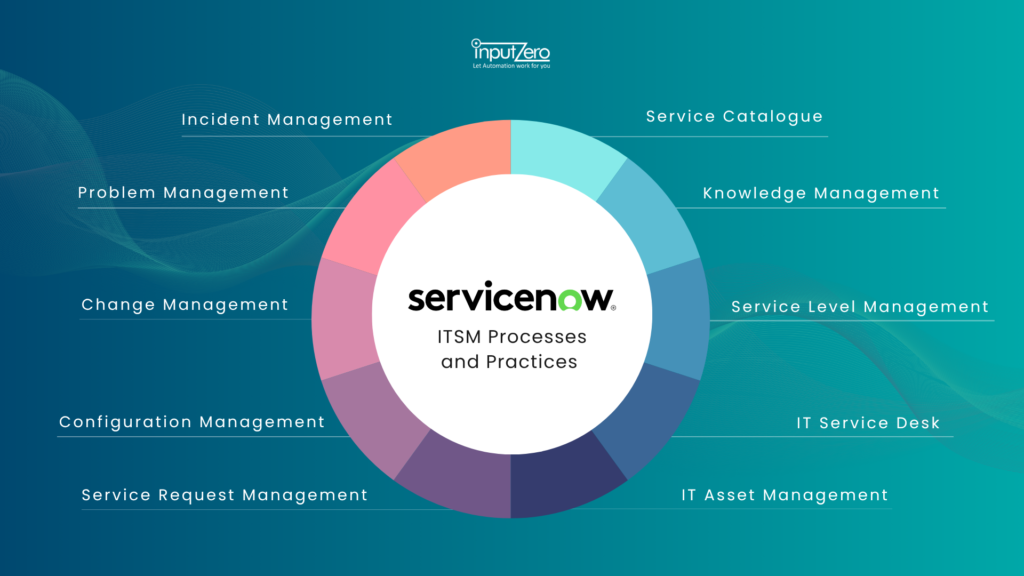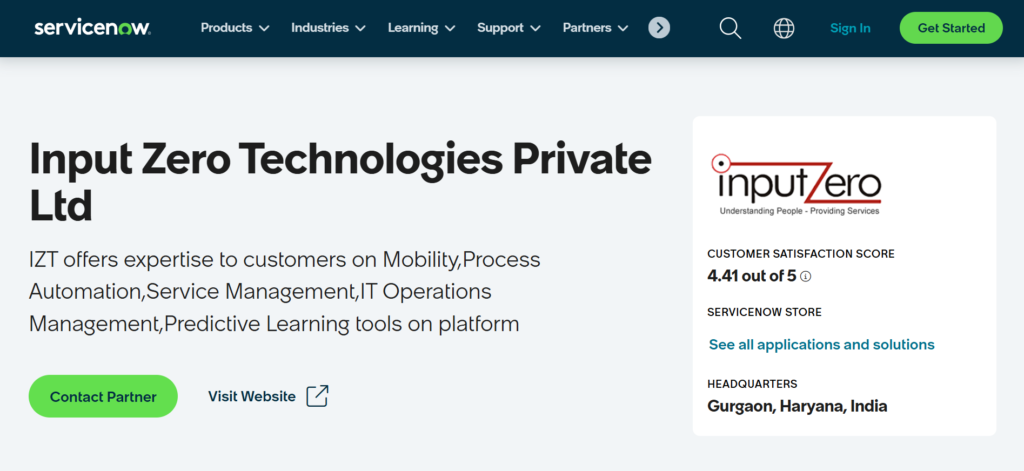Let’s say you run a big shopping mall. Hundreds of people come in every day. Lights need to work, the air conditioning must stay cool, shops must open on time. Now, imagine if every time a lightbulb fused, or the AC stopped working, your maintenance team ran around with no plan, fixing things randomly as problems came up. Chaos, right?
Now, what if your mall had a system? a plan where every technician knew their role, every complaint was tracked, and every maintenance task was scheduled? Things would run much smoother. That’s exactly what IT Service Management (ITSM) does, but for your company’s IT services.
What Is IT Service Management (ITSM)?
At its core, ITSM is a structured framework for managing the lifecycle of IT services, from development to delivery and continuous improvement. Unlike break-fix support, ITSM focuses on proactive, process-driven service management to meet business objectives efficiently.
In simple words, ITSM is how companies organize and manage their IT support and services. Instead of fixing tech problems as they happen (the old-school way), ITSM is like having a playbook where every IT task, small or big, is handled properly, step by step.
From setting up employees’ laptops to fixing server issues, to giving staff access to Wi-Fi, ITSM makes sure IT support is organized, quick, and efficient.
ITSM vs. Traditional IT Support
Traditional IT Support | ITSM |
Break-fix approach | Process-driven and proactive |
Untracked tasks | Monitored and measured outcomes |
High downtime risks | Optimized uptime and service levels |
ITSM Processes and Practices Explained
IT Service Management (ITSM) is like having a clear rulebook for your company’s IT team, helping them handle problems, upgrades, and requests smoothly instead of rushing around fixing things randomly. Let’s break down the key ITSM processes using simple, everyday examples:

- Incident Management-
Fixing What’s Broken. Imagine the office Wi-Fi suddenly stops working. Incident management is the process your IT team follows to quickly fix the Wi-Fi so everyone can get back online with minimal delay.
- Problem Management
Stopping Repeat Issues. If the Wi-Fi keeps going down every week, that’s a bigger issue. Problem management means your IT team looks for the real cause—maybe an old router—and fixes it properly so the problem doesn’t happen again.
- Change Management
Making Updates Safely. Want to upgrade everyone’s computers? Change management is like planning that upgrade carefully to avoid any downtime or system crashes while new computers are being installed.
- Configuration Management
Keeping Track of Equipment. This is like having a master list of every laptop, printer, and software in your office, so the IT team knows what’s where and who’s using what.
- Service Request Management
Handling Everyday Requests. When someone asks for a new mouse, access to a software tool, or a password reset, service request management ensures those requests are handled quickly through a proper system.
- Service Catalogue
The IT Menu. Think of the service catalogue as an online menu where employees can choose from IT services like “Request New Laptop” or “Report a Software Issue.” It helps staff know what’s available without guessing.
- Knowledge Management
DIY Help. Ever used a help article to fix your phone? Knowledge management is like building a library of IT tips and guides so employees can solve small problems themselves without waiting for IT help.
- Service Level Management
Setting Promises. It’s like making a promise: the IT team agrees to fix critical issues within 2 hours and less urgent ones within 24 hours. Service level management tracks if the team keeps those promises.
- IT Service Desk
Your Go-To Help Point. Instead of asking random people for IT help, everyone contacts the IT service desk– the official helpline where trained support staff handle all tech issues and requests.
- IT Asset Management
Avoiding Lost and Forgotten Tech. Remember that laptop someone left in storage last year? IT asset management tracks every piece of tech the company owns, so nothing gets lost, forgotten, or wasted.
Why Does Your Business Need ITSM
Imagine running a company where employees can’t get quick tech help, systems break randomly, and everyone wastes time waiting for fixes. Frustrating, right? That’s what happens when a business lacks proper IT Service Management (ITSM). ITSM acts like a game plan for your IT team, ensuring everything tech-related runs smoothly, efficiently, and without chaos.
Here’s why your business absolutely needs ITSM:
- Predictable IT Operations: ITSM standardizes processes, so every IT task—whether setting up new software or fixing a server—is done systematically and efficiently.
- Minimized Downtime: Structured processes for incident management ensure that problems get fixed quickly, reducing costly business disruptions.
- Prevents Repeated Issues: By addressing the root causes of tech problems, ITSM prevents the same issues from happening over and over again.
- Smooth Implementation of Changes: ITSM protocols allow for safer upgrades and changes without disrupting your workflow.
- Improved Transparency: All IT activities are tracked and documented, giving management full visibility into service performance.
- Enhanced User Experience: Employees get faster IT support and self-service options, keeping them productive and satisfied.
- Cost Control: Reducing errors, avoiding downtime, and preventing duplication saves your business significant costs over time.
- Supports Growth: ITSM processes scale as your business expands, ensuring your IT support grows with you.
- Compliance Ready: Documented processes and records help you meet industry regulations and standards effortlessly.
15 Benefits of Implementing ITSM
Implementing ITSM is like giving your IT team a roadmap, a toolset, and a mission—all designed to make your company more efficient, productive, and future-ready.
- Reduced IT Downtime: Faster issue resolution means your employees stay productive.
- Quicker Response Times: Service requests and incidents are handled with clear priorities.
- Standardized IT Processes: Everything from password resets to server upgrades follows a set process.
- Higher Employee Satisfaction: Quick, reliable tech support makes employees happier and less frustrated.
- Cost Savings: Reduced errors, less wasted time, and smarter resource allocation cut operational costs.
- Proactive Problem Prevention: Regular checks and root cause analysis stop issues before they grow.
- Simplified Compliance: Easy-to-produce documentation for audits and regulations.
- Real-Time Monitoring: Dashboards give live updates on service performance and problem status.
- Streamlined Change Management: Safe, controlled implementation of system updates or new software.
- Centralized IT Knowledge: Employees access solutions through knowledge bases and self-service portals.
- Scalable Support: Easily handle IT needs as your business grows without stretching your resources.
- Improved Vendor Management: Manage third-party service providers and contracts more efficiently.
- Consistent Service Delivery: Meet promised service levels with Service Level Agreements (SLAs).
- Data-Driven Decisions: Use reports and analytics to make smarter IT and business decisions.
- Greater Business-IT Alignment: IT supports broader business goals, not just technical needs.
Understanding ServiceNow ITSM
What Is ServiceNow ITSM?
ServiceNow ITSM is a cloud-based solution that streamlines IT service delivery using automation, AI, and best practices frameworks like ITIL (Information Technology Infrastructure Library). It helps IT teams manage incidents, changes, problems, and more—all from a single platform.
Key Features of ServiceNow ITSM
- AI-powered incident resolution
- Integrated knowledge base
- Self-service portal for users
- Real-time dashboards and reporting
- Automation of repetitive tasks
- Mobile support for on-the-go IT teams
AI-Powered ITSM with ServiceNow
ServiceNow integrates artificial intelligence and machine learning directly into its ITSM workflows, transforming how businesses manage their IT services.
Key AI Features in ServiceNow ITSM:
- Predictive Intelligence: Automatically categorize, prioritize, and route incidents based on historical data.
- Virtual Agents: AI-powered chatbots handle common IT issues, reducing the load on human agents.
- Automated Workflows: AI identifies bottlenecks and recommends workflow improvements for faster resolution.
- Incident Trend Analysis: Machine learning algorithms analyze past incidents to predict and prevent future issues.
Choosing the Right Implementation Partner

If you’re seeking a trusted ServiceNow implementation partner, Input Zero Technologies (IZT) stands out as an award-winning Elite Partner with 350+ successful projects worldwide. Backed by 250+ certified experts, IZT delivers industry-specific, AI-driven solutions across BFSI, healthcare, manufacturing, and IT services. From consulting to managed services, we offer end-to-end ServiceNow lifecycle support with a client-first approach. Combining global scale with local expertise, IZT ensures agile, future-ready digital transformation for your business.
Frequently Asked Questions (FAQs)
Q1: What is ServiceNow ITSM?
ServiceNow ITSM is a cloud-based platform that helps businesses manage and deliver IT services efficiently using structured workflows and automation.
Q2: How does ServiceNow use AI in ITSM?
It uses AI for ticket routing, predictive analytics, automated chatbots, and intelligent knowledge management, all designed to speed up IT support.
Q3: What’s the difference between ITSM and ITIL?
ITSM is the practice of managing IT services, while ITIL provides a set of best practices that guide ITSM processes.
Q4: How long does ServiceNow ITSM implementation take?
Depending on your company size and needs, implementation can take from a few weeks to several months. Contact sales@inputzero.com to know more.
Q5: Can ServiceNow integrate with existing IT tools?
Yes. ServiceNow integrates easily with various IT tools, cloud services, and third-party applications for seamless operations.



